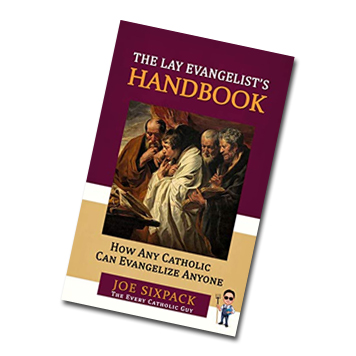Culture Of Life 101 . . . “The History Of The RU 486 Abortion Pill”
By BRIAN CLOWES
(Editor’s Note: Brian Clowes has been director of research and training at Human Life International since 1995. For an electronic copy of chapter 2 of The Facts of Life, “Abortifacients,” e-mail him at bclowes@hli.org.)
+ + +
At one time, the lives of preborn children were valuable to researchers for the pharmaceutical corporations. The scientists worked hard to avoid injuring them as they developed new drugs. But times have radically changed. Big Pharma now spends millions of dollars annually developing drugs and devices that deliberately kill the preborn child as efficiently and as easily (to the mother) as possible.
One 1980s political cartoon showed researchers saying, “Our new drug kills unborn children! We’re ruined!” Now they say, “Our new drug kills unborn children! We’re rich!”
In the 1970s, Garrett Hardin and other population theorists dreamed of a “contraceptive” that would most likely take the form of an abortifacient pill.
With RU 486, it seems that the anti-life genie has finally granted their unholy wish.
The Lethal Origins of RU 486. The tale of the abortion pill is laden with deception, outright lies, and dishonest manipulation of every kind.
The original manufacturer of RU 486 was the French company Groupe Roussel Uclaf, a subsidiary of the West German pharmaceutical giant Hoechst. Hoechst had changed its name from the original “I.G. Farben” after World War II in an attempt to shake off its loathsome reputation. After all, it had profited greatly from the manufacture of the cyanide gas Zyklon B, which the Nazis used to exterminate Jews and others in the “showers” of their death camps.
Now I.G. Farben’s subsidiary is making an even greater profit by exterminating millions of preborn babies.
Ironically, the Pill’s inventor, Etienne Emile Baulieu of France’s National Institute of Health and Medical Research, is Jewish. He was born in 1926 to Leon Blum and changed his name in 1942, perhaps to avoid being killed by the Zyklon B gas made by the same company he worked for while developing RU 486.
On September 23, 1988, the French government, which just happened to own a little more than a third of Roussel’s stock, approved distribution of the abortion pill on the condition that it be administered only in approved medical centers and only until the seventh week of pregnancy. The manufacturer was immediately swamped with tens of thousands of pro-life protest letters, and more than 20,000 French pro-life activists marched in Paris streets in opposition to the Pill.
For months, Dr. Edouard Sakiz, Roussel Uclaf chairman, watched pickets outside his window at work. Pro-lifers publicly condemned his new product as “a chemical weapon that would poison the still tiny children of a billion Third World mothers.” Jean Marie Cardinal Lustiger, archbishop of Paris, condemned the Pill as being “extremely dangerous,” both physically and morally.
On October 26, 1988, about one month after government approval of the Pill, Roussel Uclaf suspended distribution in China and France because of the “outcry of public opinion at home and abroad.” Andre Ullman of Roussel Uclaf, who helped develop the Pill, said that a boycott figured heavily in the company’s decision to stop making the drug.
The backlash from pro-abortionists was incredibly vehement. Faye Wattleton, then-president of the Planned Parenthood Federation of America, complained that the suspension was “. . . a tragic display of cowardice and a shocking blow to women around the world.” Liberation, France’s largest left-wing daily newspaper, sneered at the Catholic Church in its front page article entitled “The Diktat of the Bigots.” The political weekly L’Evenement du Jeudi sniveled about “. . . the brutal return of the Inquisition.”
The French Family Planning Movement (including, of course, Planned Parenthood) trotted out its usual mix of tired slogans to condemn “. . . this new assault by conservative religious forces. . . . The traditionalists and Catholic reactionaries now want to impose their reactionary laws on women.”
On October 29, 1988, the French government ordered the company to resume distribution of RU 486. Health Minister Claude Evin, quoting France’s 1975 law legalizing abortion, stated that the Pill was “the moral property of the women of France.” Evin had invoked, for the very first time, a 1968 French law that allows the government to directly intervene when the “interests of public health” are endangered.
Evin said that “I was doing what I could to make sure France did not surrender to pressure groups animated by archaic ideologies.”
Baulieu, the killer pill’s inventor, was now in the spotlight and parroted the usual pro-abortion lies. He said: “One hundred and fifty thousand women die annually from botched abortions. RU 486 could save the lives of thousands of women.”
Incredibly, pro-abortion groups even promoted Baulieu for a Nobel Prize nomination. It would be interesting indeed to see how the Nobel committee would justify elevating Baulieu to the same stature as Mother Teresa of Calcutta, who labored to save life rather than destroy it, and who condemned abortion during her own Nobel Prize acceptance lecture.
The invention of the abortion pill caused great excitement among pro-abortion groups in the United States. Several groups whose sole or primary purpose was to propagandize the public soon sprang up, including Every Child a Wanted Child (California) and the Reproductive Health Technologies Project (Washington, D.C.).
The organic dishonesty of the pro-abortion movement was highlighted as it worked hard to convince the public that RU 486 was merely another contraceptive. The public relations firm Bass and Howes developed and disseminated a neatly packaged and glossy press kit that included sample charts and graphs and photos. This press kit instructed the media to:
“Emphasize the dearth of other contraceptive options available — particularly in comparison with what is available in other parts of the world” and “Emphasize the issues of privacy, ease, safety, choice, and freedom, rather than of abortion and politics.”
And a writer for the pro-abortion front group “Catholics” for [a Free] Choice (CFFC) said:
“If RU 486 is also used monthly, pro-lifers would have a hard time convincing the public that the drug isn’t just another contraceptive. Indeed, a 1982 New York Times story on Baulieu and RU 486 described the drug as ‘a new birth control pill.’ Planned Parenthood released a ‘Fact Sheet’ in October that refers to RU 486 as a type of ‘interceptor (luteal contraception).’ If most people hear a new drug described as ‘birth control,’ they’ll think of the Pill and IUD, not abortion. . . . If more women come to use RU 486 than traditional contraceptives, abortion would be the preferred method of birth control in the United States.”
Numbing Consciences
The archbishop of Lyon, Albert Cardinal Decourtray, summed up the feelings of pro-life Christians everywhere as he said: “The Pill now produces a process which allows abortion to seem like a contraceptive. In other words, it tends purely and simply to numb the conscience about both the act itself and its moral gravity. A follower of Christ cannot accept it.”
In November of 1988, the Holy See clarified its definition of abortion to include the use of drugs like RU 486, which are used specifically to kill the unborn child. Such use is an excommunicable offense for Catholics, the same as procuring a surgical “elective” abortion.
The United Nations World Health Organization (WHO) conducted detailed tests with RU 486 and a similar drug, ZK 98.734, which was produced by Schering AG. It is obvious that WHO would have no particular interest in RU 486 unless the Pill would assist its population control programs. Baulieu himself has cited his own concern about the “complications of overpopulation” as one of the reasons he developed the abortion pill.
The Population Council tested RU 486 on 2,100 American women between October 1994 and December 1995. This trial deliberately excluded women over 35 years of age and those who smoked more than ten cigarettes each day. As a result, the Food and Drug Administration advises doctors to “treat these patients with caution,” and also to be very careful with women taking anticonvulsants or anticoagulants. On September 28, 2000, the FDA approved RU 486 for use in the United States.
The Population Council gave the rights to produce RU 486 to the New York-based marketing firm Danco Laboratories, which sells a chemical equivalent under the name Mifeprix or “Early Option.” The Shanghai-based Hua Lian Pharmaceutical Company makes the drug compound.
Since the RU 486 abortion pill was approved for general use in the United States, more than two million preborn children have lost their lives to it, and by the end of this year, more than one-fourth of all abortions performed in the United States will be non-surgical, or “medical” — abortion by pill.











